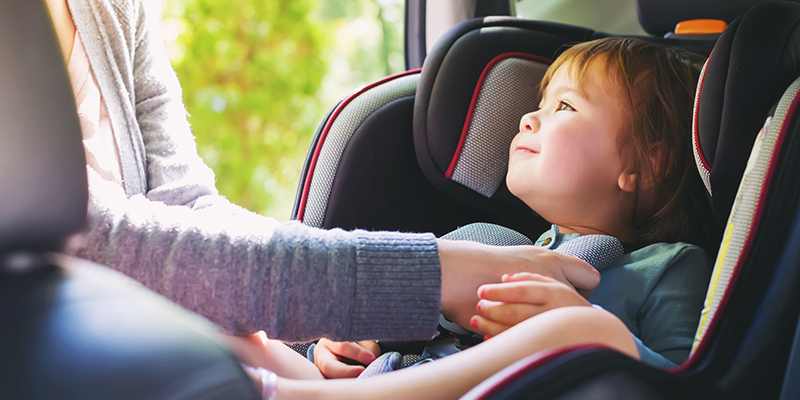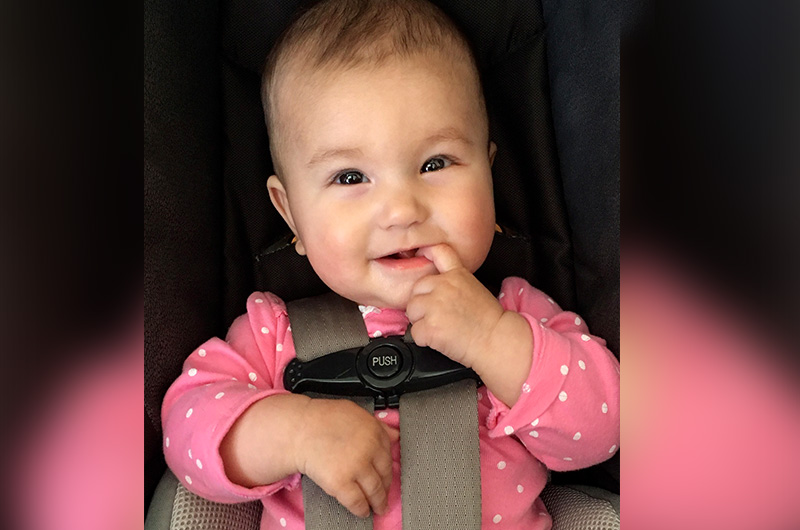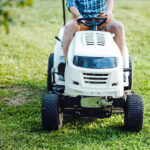Guide to car seat safety

Whether you’ve begun your morning by driving down the street to the grocery store or embarking on a cross-country road-trip, it’s hard to imagine a day going by without needing to jump into the car.
But regardless of your destination, every time you put your child in the car it’s important to practice backseat safety. Motor vehicle injuries are the number one cause of death for children from birth to age 18. However, proper use of car seats and seat belts reduces serious and fatal injuries by more than 50 percent. So, whether you’re facing a 5-minute or a 5-hour drive, it’s important to make sure your child is safely fastened in the right car seat for them.
The Massachusetts Child Passenger Safety law passed in April of 2008 requires children to ride in a federally approved child passenger restraint that is properly fastened and secured until they are 8 years old or 4 feet 9 inches tall.
With so many types of car seats, it can be difficult to choose the right seat for your child. Use these tips to help you find the appropriate car seat for your child.
Rear-facing car seats

If your child is under age 2 or weighs less than 40 pounds, they must be secured in a rear-facing car seat. Your child should use their rear-facing seat until they reach the maximum height and weight limit recommended by the car seat manufacturer.
To ensure that your child is safely positioned in a rear-facing seat, make sure the seat fits correctly. The harness straps of the seat must be secured at or below the shoulders. The harness clip must be secured across your child’s chest at armpit level. These straps should be snug (you should only be able to fit one finger under the harness strap at the collarbone).
Most importantly, you should never place a rear-facing seat in the front passenger seat of a vehicle. In the event of a car crash, an air bag could severely injure or kill a child in a rear-facing seat.
Forward-facing car seats

If your child has reached the maximum weight limit of their rear-facing car seat, or if they are over age 2 and weigh more than 40 pounds, they may be moved to a forward-facing position while traveling. It’s important to remember that the maximum weight limit is different for each child safety seat, so you should refer to the appropriate weight range in your car seat’s manual.
If your child has graduated to a forward-facing car seat, double-check that the car seat fits appropriately. The harness straps of the car seat must be secured at or above the child’s shoulders. The harness clip must be secured across the child’s chest at armpit level. Remember that these harness straps need to be snug: only one finger should fit under the harness strap at the collarbone.
Finally, your forward-facing car seat must always be in the upright position.
Booster seats

Once your child has graduated from a car seat, they should be placed in a belt-positioning booster seat. Booster seats are generally used for children between 4 and 8 years old, who weigh between 40 and 80 pounds.
All children who have transitioned from front-facing seats with harnesses must use a booster seat until they are 8 years old or 4 feet 9 inches tall, according to Massachusetts law.
A booster seat should help your child’s seat belt to fit them properly. This means that their shoulder belt will go across their shoulder instead of their neck, and the lap belt will rest across their hips, not their stomach. Your child must use a lap and shoulder belt while riding in their booster seat.
Safety belt fit test
The American Academy of Pediatrics (AAP) recommends that children ages 13 younger sit in the rear seat of the vehicle and use an appropriate car seat or a lap and shoulder belt.
Before your child graduates from a booster seat to a lap and shoulder belt alone, they should be able to pass a safety belt fit test. Your child is ready to use a lap and shoulder belt when they can:
- sit all the way back against the vehicle seat
- comfortably bend their knees at the edge of the seat
- wear the shoulder belt comfortably, but firmly, across their shoulder, between the neck and the arm
- wear the lap belt comfortably, but firmly, over their hips
- remain in this position for the entire trip
Special-needs car seats
Parents of infants who, for medical reasons, must lie down while traveling, should use car beds rather than traditional car seats. Car beds are designed to allow infants to travel lying down. When positioning your infant in a car bed, the infant’s head must be facing the center of the vehicle away from the side door.
Parents also may choose to use EZ-ON® Vests, which are transportation vests used by children with special transportation needs. There are two types of E-Z ON Vests. The E-Z ON Upright Vest is designed for use by children who have behavioral conditions or poor trunk control. The Modified E-Z-ON Vest is designed for children who must travel lying down.
For families living outside Massachusetts who are unsure of the current car seat legislation in their state, the Insurance Institute of Highway Safety releases a helpful table of child seat and seat belt laws for each state.
Maintenance and installation of ALL seats
Your car seats should be installed using the LATCH (lower anchors and tethers for children) or the vehicle seat belt so that they are secured in place in your backseat. Vehicles manufactured after September 2002 have the LATCH installed in at least two positions in the rear seat.
Car seats should only be used for six years from the date of manufacture. The date of manufacture, model number and type can be found on a label on the car seat. Parents should send in their registration cards or register their seat online in case the car seat is recalled.
For information on where you can get your car seat installed, call 617-355-7332 or email injurypreventionprogram@childrens.harvard.
Learn more about the Boston Children’s Injury Prevention Program.
Related Posts :
-

Ask a sports medicine specialist: Why are ACL tears so common among female athletes?
When an athlete is sprinting after an opponent who suddenly stops or changes direction, their anterior cruciate ligaments (ACLs) make ...
-

Which pain medication is right for your child? What a pediatrician wants parents to know
There’s no shortage of safe and effective pain medications for children. Acetaminophen (commonly known as Tylenol), ibuprofen (Motrin, Advil), ...
-

Jackie’s dreams of playing professional soccer back on track after ACL surgery
From her dorm in Newcastle, England, Jackie Zapata can hear fans roaring in the soccer stadium a few blocks away. ...
-

What orthopedic trauma surgeons wish more parents knew about lawnmower injuries
Summer is full of delights: lemonade, ice cream, and fresh-cut grass to name a few. Unfortunately, the warmer months can ...





